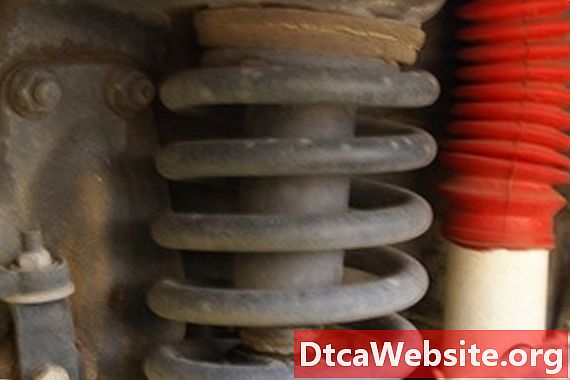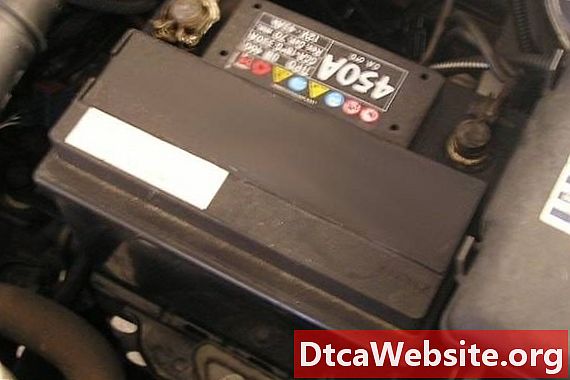
Contenu
- Front Shock Replacement
- Step 1
- Step 2
- Step 3
- Step 4
- Step 5
- Step 6
- Rear Shock Replacement
- Step 1
- Step 2
- Step 3
- Step 4
- Warning
- Items you will need

Shocks should be replaced on your Jeep Grand Cherokee every 75,000 miles to maintain a high quality ride. Shocks mount from the frame of the vehicle to the axle and absorb any bumps from the road. Shocks work in parallel with springs to soften the ride and performance. Shocks are filled with nitrogen and are specific to each vehicle. Faulty shocks can lead to premature tire wear, rough ride and poor handling.
Front Shock Replacement
Step 1
Loosen the lug nuts of one of the front tires with a lug nut wrench. Place a jack under the axle of your Jeep and lift the vehicle enough to remove the tire. Remove the lug nuts and pull the tire from the axle.
Step 2
Open the hood and locate the upper shock bolts inside the engine compartment. These are on each side of the engine on the fender wells. Remove the nut with a 14 mm socket and a ratchet.
Step 3
Remove the nut from the bolt that secures the shock to the mounting bracket on the axle with a ratchet and socket. Pull the bolt from the bracket.
Step 4
Remove the shock from the vehicle.
Step 5
Place the new shock into position and install the lower mounting bolt through the bracket and into the shock absorber. Tighten the nut with the ratchet and socket. Install the upper nut that secures the upper shock to the vehicle inside the engine compartment with the ratchet and socket.
Step 6
Reinstall the tire and tighten the lug nuts with the lug nut wrench. Lower the vehicle to the ground with the jack.
Repeat the process on the opposite side of the vehicle.
Rear Shock Replacement
Step 1
Loosen the lug nuts on one of the rear tires with the lug nut wrench. Place the jack under the axle of your Jeep and lift the vehicle enough to remove the tire. Remove the lug nuts and pull the tire from the axle.
Step 2
Locate the two mounting bolts that secure the shock into position. There are two bolts, one on the top and one on the bottom. Remove these bolts with the ratchet and socket. Remove the shock from the vehicle.
Step 3
Place the new shock into position. Thread the mounting bolts through the bracket and into the shock. Tighten the bolts with the ratchet and socket.
Step 4
Replace the tire onto the hub of the axle. Tighten the lug nuts and lower the vehicle to the ground.
Repeat this process on the opposite side of the vehicle.
Warning
- Use extreme caution when lifting the vehicle and working under it.
Items you will need
- Lug nut wrench
- Hydraulic jack
- Ratchet
- Socket set


